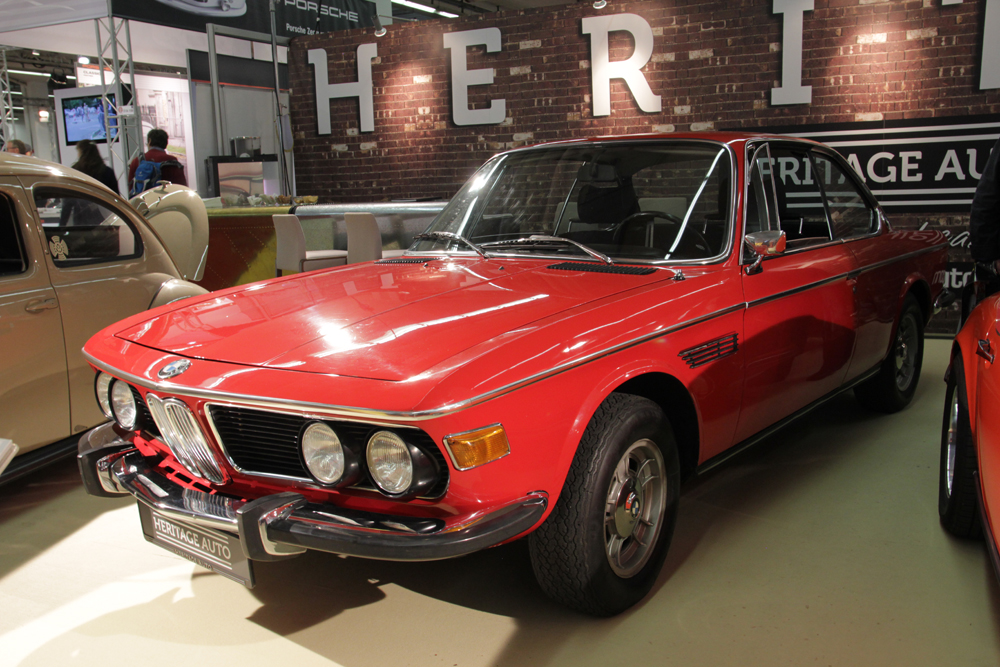-
Insurance
InsuranceAbout our productsLearn about insuringGet a quote Get current values, historical values, model history and more.
-
Valuation
ValuationHagerty valuation toolLook up a vehicle value Get current values, historical values, model history and more.
-
Events
EventsHagerty official eventsHagerty ClubhouseEvent calendar
-
Entertainment
EntertainmentMore to explore
- Portal login
1972 BMW 3.0CS
Base Coupe 3 L
Vehicle values by condition
Fair
Condition 4
£13,400
#4 cars are daily drivers, with flaws visible to the naked eye. The chrome might have pitting or scratches, the windshield might be chipped.
Good
Condition 3
£28,400
#3 cars could possess some, but not all of the issues of a #4 car, but they will be balanced by other factors such as a fresh paint job or a new, correct interior.
Excellent
Condition 2
£45,800
#2 cars could win a local or regional show. They can be former #1 cars that have been driven or have aged. Seasoned observers will have to look closely for flaws.
Concours
Condition 1
£80,300
#1 vehicles are the best in the world. The visual image is of the best car, unmodified, in the right colours, driving onto the lawn at the finest concours.
Insurance premium for a
1972 BMW 3.0CS Base Coupe 2985
valued at £28,400
£192.89
/ year*
History of the 1971 - 1975 BMW 3.0CS

1971 - 1975 BMW 3.0CS
The BMW 3.0 CS, BMW 3.0 CSi and BMW 3.0 CSL were built from 1971 to 1975. The styling was the final iteration of a progressive development that started with the Bertone-designed 3200 CS of the early 1960s. The 3.0 CS update was carried out in-house at BMW under the control of Wilhelm Hoffmeister. It is a sporting GT with four seats and has a front-mounted engine driving the rear wheels.
The 3.0 CS replaced the similar-looking 2800 CS in BMW’s lineup. The cars were actually built by Karmann and have a monocoque chassis with independent suspension courtesy of MacPherson struts at the front and semi-trailing arms at the back. Power steering was fitted as standard. The BMW 3.0 CS has a well balanced and delicate design devoid of fussiness, and as a result was well received when launched. The 1972 model year saw the introduction of fuel injection to create the 3.0 CSi, which was produced alongside the 3.0 CS.
The BMW 3.0 CS was launched with the straight-six engine of its predecessor stretched to a capacity of 2986 cc. This unit is fed by twin Zenith carburettors, while the 3.0 CSi has Bosch fuel injection. All cars have a 4-speed manual gearbox with a 3-speed automatic gearbox available for the 3.0 CS and 3.0 CSi.
These coupes are fast and capable tourers, mixing a blend of good handling with a comfortable ride. Add in the good looks, airy cabin, and an understated but high quality interior, and you get the complete GT package. The engines are strong pullers, the cars are reliable and the only downsides regarding use seem to be the lack of rear legroom when a tall driver is at the helm along with an inordinately large steering wheel fitted as standard.
The BMW 3.0 CS family is notoriously prone to rust with a number of hidden seams to trap and retain water. Assessing the condition of sills, boot, rear sub-frame mount and wing joints can serve as a useful indicator for further horrors hidden out of sight. Compounding this some of the parts are difficult to find and can be very expensive. Manual transmissions are preferred to automatic with the injected car being more desirable than one on carbs. At the top end originality is key but condition is also hugely important as restoration is likely to be costly.
BMW also produced a lightened version of the 3.0 CS, called the 3.0 CSL, for homologation purposes. These variants are by far the most desirable of the 3.0 CS family, and is an automotive icon of the 1970s, even providing the ‘canvas’ for two of BMW’s Art Cars.
Alternatives are hard to quantify - the later BMW E30 M3 shared the 3.0 CSL’s track success, as did the Alfa Romeo GTA, but not much shares the BMW’s combination of power and touring car comfort. Contemporary competitors included the Aston Martin DBS and the Jensen Interceptor III.
Hagerty Newsletter
Get your weekly dose of car news from Hagerty UK in your inbox

ADVERTISEMENT